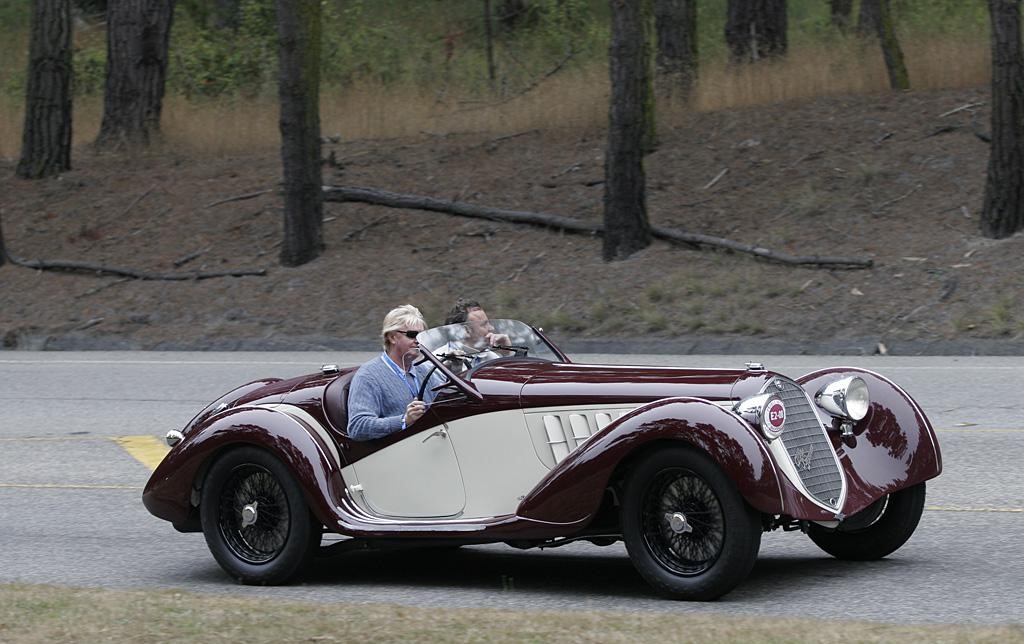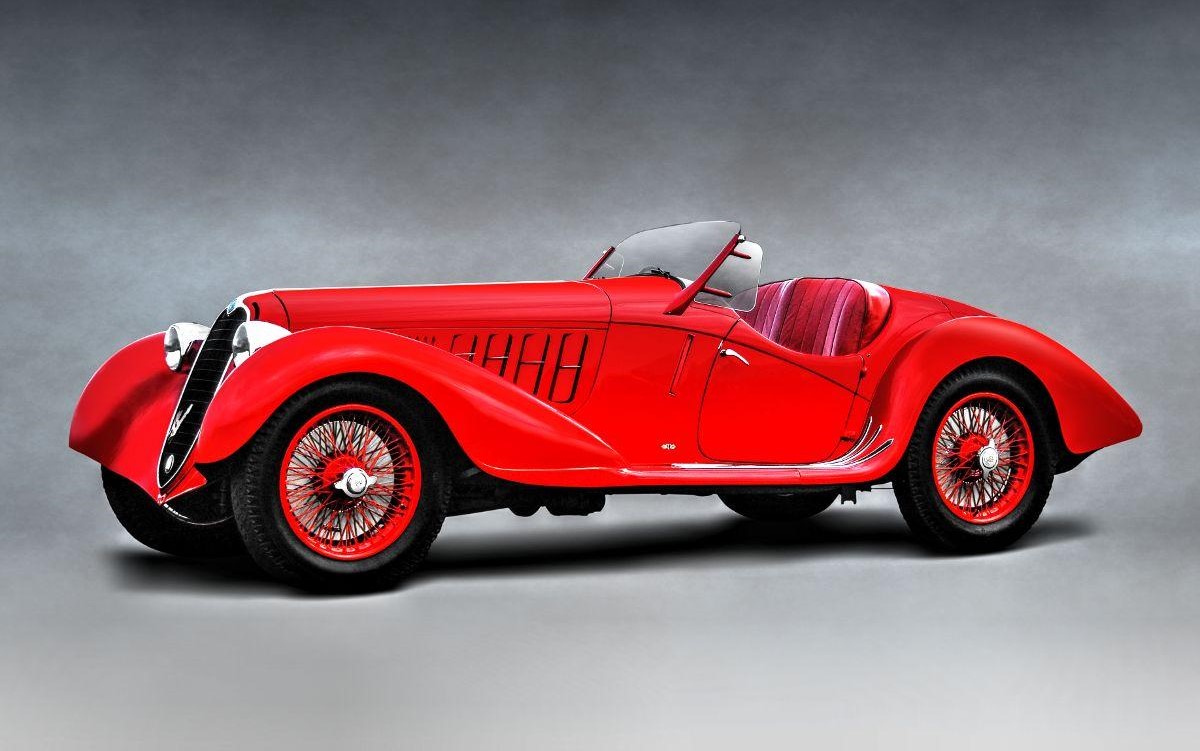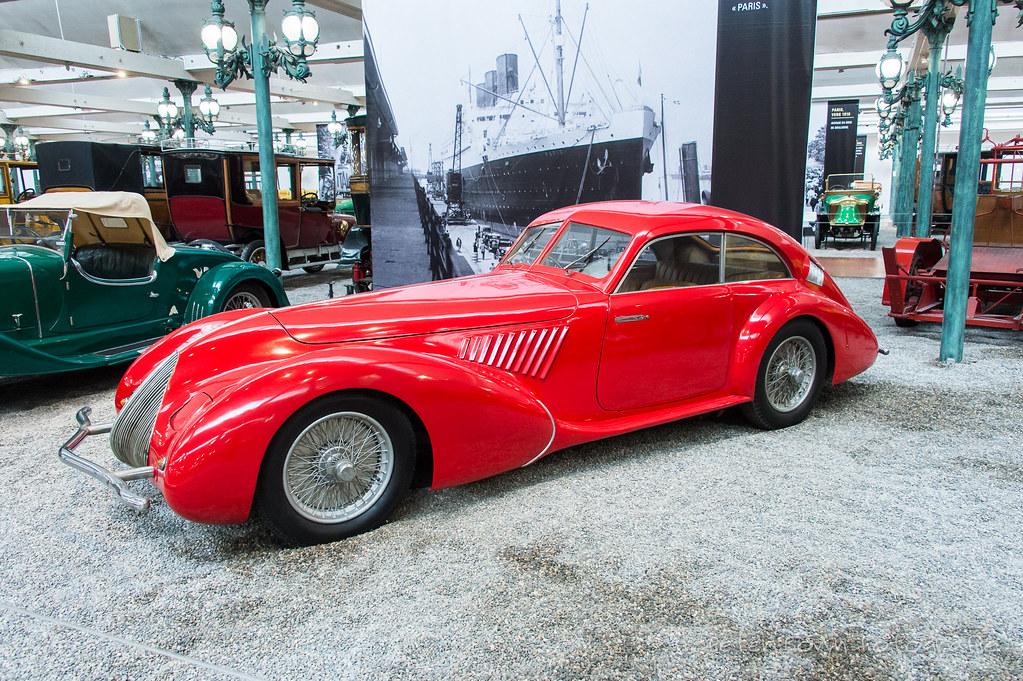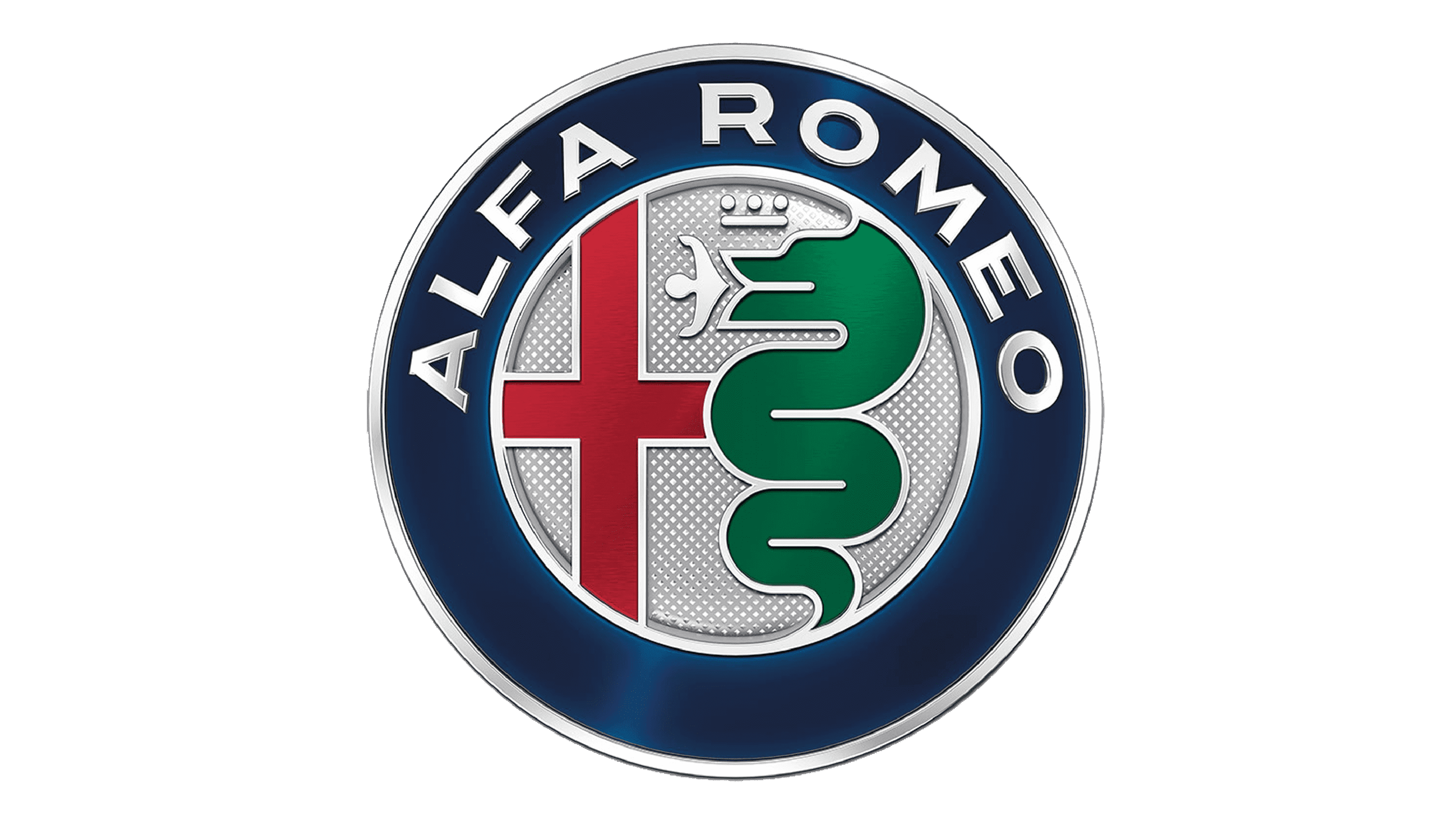1937 Alfa Romeo 8C 2900A

The descriptions of the Classic Cars in the Directory were partly generated or supplemented with the help of artificial intelligence (AI). The content may occasionally not always be entirely accurate or factually correct despite careful checking.
The Alfa Romeo 8C 2900A was a high-performance sports car manufactured by the Italian carmaker Alfa Romeo in 1937. This car was the successor to the 8C 2900B and was one of the most significant racing cars of its time. Designed by Vittorio Jano, the Alfa Romeo 8C 2900A was considered to be one of the most technologically advanced race cars of the pre-war era.
At the heart of the Alfa Romeo 8C 2900A was its 2.9-liter straight-eight engine, which produced a massive 220 horsepower. This engine was one of the most powerful of its time and featured a dual-overhead camshaft design, hemispherical combustion chambers, and twin superchargers. The engine was mated to a four-speed manual transmission that sent power to the rear wheels.
The car's chassis was made of aluminum to keep its weight down, which made it one of the lightest cars of its time. The suspension system featured independent front suspension with double wishbones and a live rear axle with trailing arms. The car's braking system was hydraulic, and the steering system was worm and sector.
The Alfa Romeo 8C 2900A had a top speed of up to 120 miles per hour, which was incredibly fast for its time. The car's acceleration was also exceptional. It was capable of reaching 60 miles per hour from a standstill in under 7 seconds, which was impressive considering the car's weight and the technology available at that time.
The car's exterior was designed to be aerodynamic, with its long, pointed nose and sleek, streamlined body. The design of the Alfa Romeo 8C 2900A was both visually pleasing and functional, as it helped reduce air resistance and improve the car's performance.
The Alfa Romeo 8C 2900A was a racing powerhouse, with many victories in various competitions, such as the Mille Miglia, Le Mans, and the Targa Florio. Its success was due to its powerful engine, lightweight construction, and cutting-edge technology, which made it one of the most advanced race cars of its time.
In conclusion, the Alfa Romeo 8C 2900A was a technical marvel of its time. Its straight-eight engine, lightweight aluminum chassis, and cutting-edge suspension system, steering system and braking system made it a true high-performance sports car. The car's design was both visually pleasing and functional, making it a timeless classic in the world of automotive design. The Alfa Romeo 8C 2900A will always be remembered as one of the great racing cars of the pre-war era.
Milestones
- Introduction of the Alfa Romeo 8C 2900A at the Paris Motor Show in 1935 - Production of only 33 8C 2900A models between 1936-1938 - Winning the 1936 Mille Miglia race with Tazio Nuvolari driving an 8C 2900A - Winning the 1937 24 Hours of Le Mans with an 8C 2900A driven by Luigi Chinetti and Philippe Etancelin - Being considered one of the most advanced and powerful cars of the pre-war era with a 2.9-liter straight-eight engine producing 220 horsepower - Being featured in the early James Bond film "Octopussy" in 1983 and becoming an iconic collector's car.Technical
- Engine: 2.9-liter straight-8 - Maximum power output: 180 horsepower - Transmission: 4-speed manual - Top speed: approximately 110 mph - Suspension: independent front and rear - Brakes: four-wheel hydraulic drum - Body style: two-seater coupe - Wheelbase: 2,940 mm (116 in) - Weight: 1,150 kg (2,530 lb) - Production: only 116 units were ever produced. - Racing pedigree: the Alfa Romeo 8C 2900A won the prestigious Mille Miglia race in 1938, along with various other races during its time.



